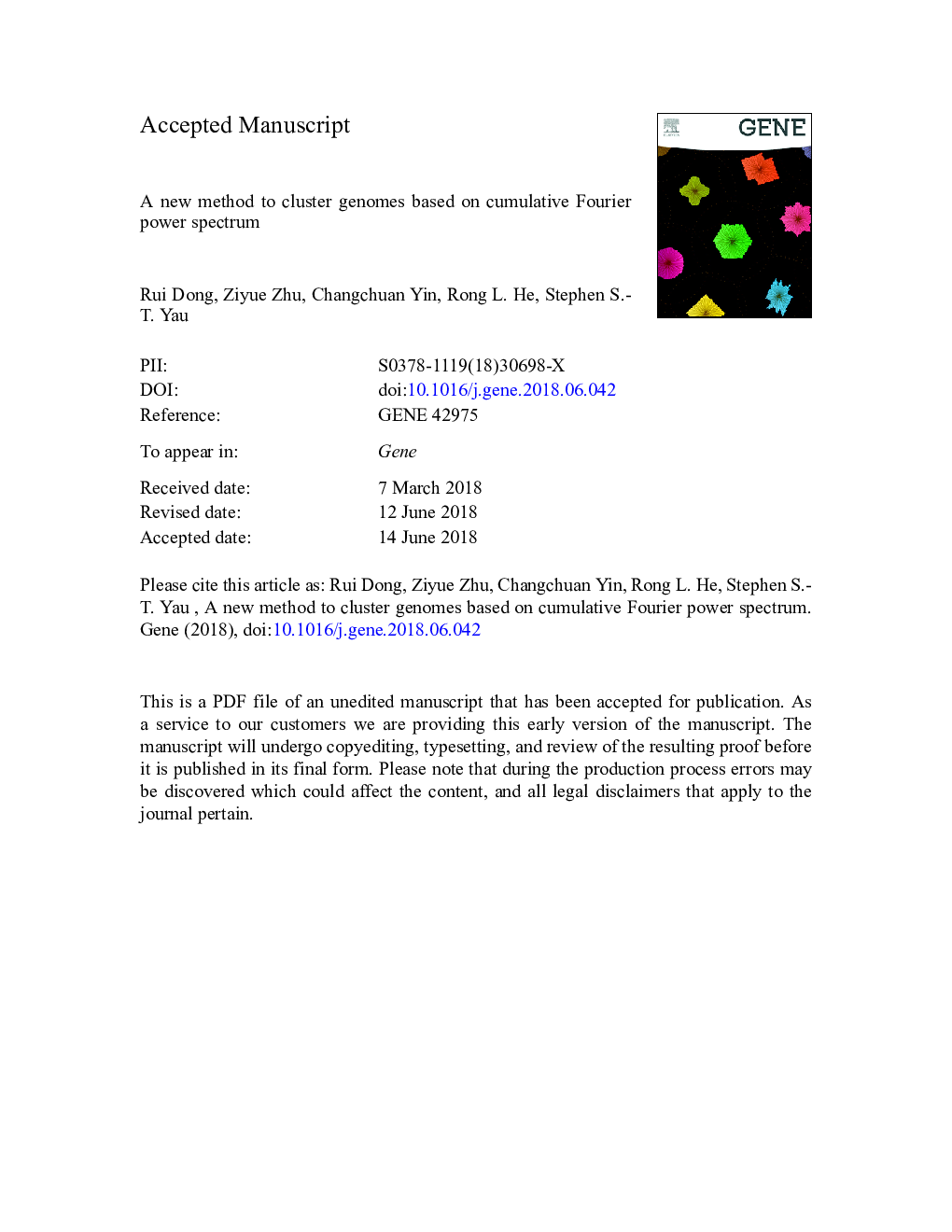| Article ID | Journal | Published Year | Pages | File Type |
|---|---|---|---|---|
| 8644611 | Gene | 2018 | 35 Pages |
Abstract
Analyzing phylogenetic relationships using mathematical methods has always been of importance in bioinformatics. Quantitative research may interpret the raw biological data in a precise way. Multiple Sequence Alignment (MSA) is used frequently to analyze biological evolutions, but is very time-consuming. When the scale of data is large, alignment methods cannot finish calculation in reasonable time. Therefore, we present a new method using moments of cumulative Fourier power spectrum in clustering the DNA sequences. Each sequence is translated into a vector in Euclidean space. Distances between the vectors can reflect the relationships between sequences. The mapping between the spectra and moment vector is one-to-one, which means that no information is lost in the power spectra during the calculation. We cluster and classify several datasets including Influenza A, primates, and human rhinovirus (HRV) datasets to build up the phylogenetic trees. Results show that the new proposed cumulative Fourier power spectrum is much faster and more accurately than MSA and another alignment-free method known as k-mer. The research provides us new insights in the study of phylogeny, evolution, and efficient DNA comparison algorithms for large genomes. The computer programs of the cumulative Fourier power spectrum are available at GitHub (https://github.com/YaulabTsinghua/cumulative-Fourier-power-spectrum).
Keywords
Related Topics
Life Sciences
Biochemistry, Genetics and Molecular Biology
Genetics
Authors
Rui Dong, Ziyue Zhu, Changchuan Yin, Rong L. He, Stephen S.-T. Yau,
